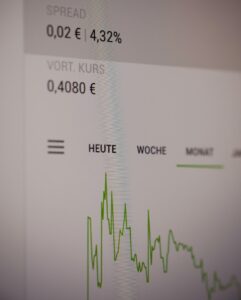Mastering Forex Trading Charting: Tips and Tricks for Beginners
Forex trading can be an exciting and lucrative venture, but it requires a solid understanding of charting and technical analysis. Charting is an essential tool for forex traders as it helps them identify trends, patterns, and potential entry and exit points. In this article, we will discuss some tips and tricks for beginners to master forex trading charting.
1. Understand the Basics of Charting
Before diving into the world of forex charting, it is crucial to familiarize yourself with the basics. Learn about different types of charts, such as line charts, bar charts, and candlestick charts. Each chart type provides different levels of information, and it is important to understand how to interpret them. Additionally, learn about key charting elements like support and resistance levels, trendlines, and chart patterns.
2. Choose the Right Charting Platform
Selecting the right charting platform is essential for successful forex trading. There are numerous charting platforms available, each with its own set of features and functionalities. Some popular charting platforms include MetaTrader 4 (MT4), TradingView, and NinjaTrader. Take the time to research and test different platforms to find the one that suits your needs and preferences.
3. Use Multiple Time Frames
When analyzing forex charts, it is crucial to consider multiple time frames. Traders often use different time frames to identify short-term and long-term trends simultaneously. For example, if you are trading on the daily chart, it is helpful to also look at the weekly and monthly charts to get a broader perspective. This approach allows you to make more informed trading decisions based on the bigger picture.
4. Focus on Key Support and Resistance Levels
Support and resistance levels are critical elements in forex charting. Support levels are price levels where demand is strong enough to prevent further price decreases, while resistance levels are price levels where supply is strong enough to prevent further price increases. Identifying these levels can help you determine potential entry and exit points for your trades. Look for areas where multiple support or resistance levels converge, as they tend to be stronger and more reliable.
5. Learn to Spot Chart Patterns
Chart patterns are formed by price movements and are used to predict future price movements. Learning to spot chart patterns can significantly enhance your trading skills. Some common chart patterns include head and shoulders, double tops, double bottoms, triangles, and flags. Each pattern has its own characteristics and implications, so it is crucial to study and understand them thoroughly.
6. Utilize Technical Indicators
Technical indicators are mathematical calculations based on historical price and volume data. They help traders identify potential trading opportunities and confirm or reject signals generated by chart patterns or other analysis techniques. Some popular technical indicators include moving averages, relative strength index (RSI), stochastic oscillator, and MACD. Experiment with different technical indicators to find the ones that work best for your trading style.
7. Keep a Trading Journal
Keeping a trading journal is a valuable practice for beginners and experienced traders alike. A trading journal helps you track your trades, analyze your performance, and identify areas for improvement. Record your entry and exit points, reasons for entering the trade, and any emotions or thoughts you had during the trade. Regularly reviewing your trading journal will help you identify patterns and develop a more disciplined and consistent trading approach.
8. Practice and Patience
Mastering forex trading charting takes time, practice, and patience. It is crucial to dedicate sufficient time to learn and refine your charting skills. Practice analyzing charts, identifying patterns, and making trading decisions in a demo account before risking real money. Be patient and persistent, as it may take months or even years to become proficient in forex charting.
In conclusion, mastering forex trading charting is essential for any trader looking to succeed in the forex market. By understanding the basics of charting, choosing the right platform, using multiple time frames, focusing on support and resistance levels, spotting chart patterns, utilizing technical indicators, keeping a trading journal, and practicing patience, beginners can develop a solid foundation for successful forex trading. Remember that charting is just one aspect of forex trading, and it is important to combine it with other analysis techniques and risk management strategies for optimal results.





